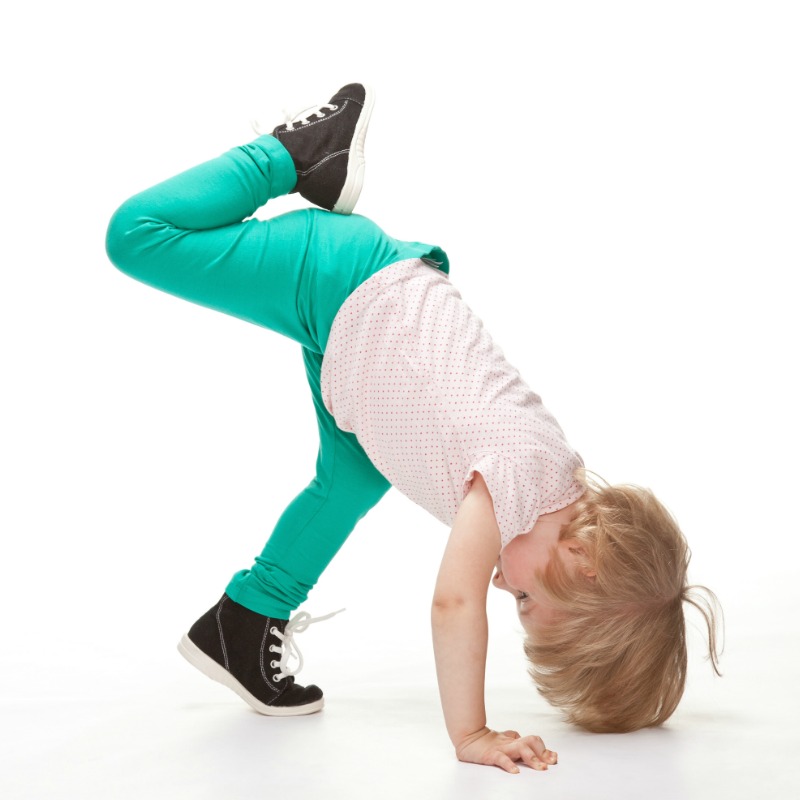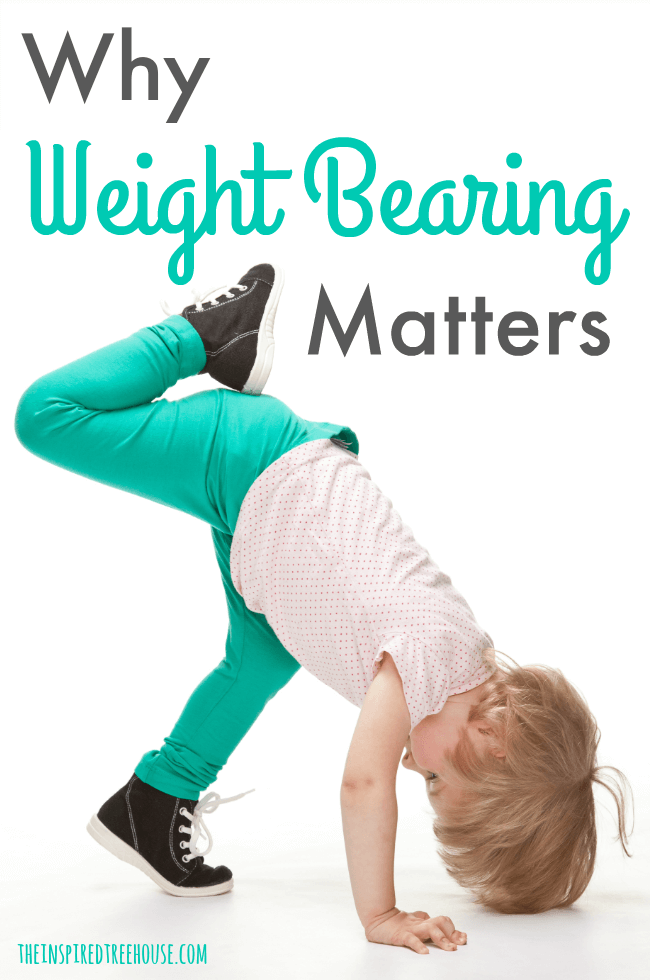Weight bearing activities are critical in the progression of developmental skills for kids!
What Does Weight Bearing Mean?
Weight bearing involves the use of muscles against gravity. In this type of activity, muscle groups work together to support the bones as the body holds a position such as standing, propping up on your elbows in a prone position to play a game, or doing a downward dog in yoga.
Why is Weight Bearing Important?
Positions like these promote bone health by increasing bone density and strength and also help to shape the joints (e.g. the point at which the leg bones meet the pelvis) of growing kids. Weight bearing also ultimately leads to improvement in a child’s balance, strength, and coordination.
Positions where kids are bearing weight provides proprioceptive input to the body’s joints and muscles. A functioning proprioceptive system allows children to move, play, and explore in a smoothly coordinated and efficient way – not too gently, not too rough.
Standing positions provide important proprioceptive and strengthening benefits to kids’ feet, ankles, knees, and hips. Positions that require kids to bear weight on their upper extremities (e.g. quadruped, prone) are essential to the development of hand strength and stability in the wrists and shoulders.
Let’s look more closely…
A newborn baby spends a lot of time on her back. Her legs and arms move freely, often in very uncoordinated, jerky movements.
As she grows, she spends more time in weight bearing positions:
-On her belly (tummy time, anyone?), propped up on her elbows (bearing weight through the elbows into the shoulders and even pushing up onto hands),
-In quadruped preparing to crawl (weight bearing through knees, hips, and hands)
-Up on her feet getting ready to walk (bearing weight up her whole lower body chain from her feet through her knees and then hips)
As more weight bearing opportunities occur, this little girl’s movements become more and more coordinated and smooth and her bones, joints, and muscles become stronger and increasingly stable.

So What’s the Big Deal About Weight Bearing?
You may be thinking what’s the big deal? Kids will naturally get these weight bearing experiences during regular development.
This may be true for most kids, however, we see many kids who skip the crawling phase altogether (you can learn more about why crawling is so important here), which means they miss out on a whole lot of quadruped weight bearing opportunities that are essential for typical motor development and strengthening.
Additionally, kids with congenital conditions such as cerebral palsy or spina bifida may not be able to independently weight bear through one or more extremities and may need help to do so. In this case, weight bearing can be helpful for reducing high tone and promoting bone growth too!
Weight Bearing Activities for Kids
Here our some of our favorite weight bearing activities for kids…
1 || Climbing up a slide
2 || Playing in quadruped
4 || Yoga poses
5 || Pushing a heavy object across a room
6 || Holding a plank pose
7 || Hanging from the monkey bars
9 || Animal walks
10 || Wall push-ups
Want to learn about some of the other fundamental concepts that we use in our pediatric therapy practice? Check out these posts and freebies…
Bilateral Coordination [FREE Printable]
Proximal Stability [FREE Printable]
Tactile Defensiveness [FREE Printable]
Planes of Movement [FREE Printable]

Latest posts by Lauren Drobnjak (see all)
- End of the Year Gifts for Therapists - April 14, 2024
- Playful Therapy Posters to Spruce Up Your Room - March 30, 2024
- How to Help a Baby Crawl & Creative Crawling Patterns We See in Therapy - March 19, 2024



[…] The Inspired Treehouse […]